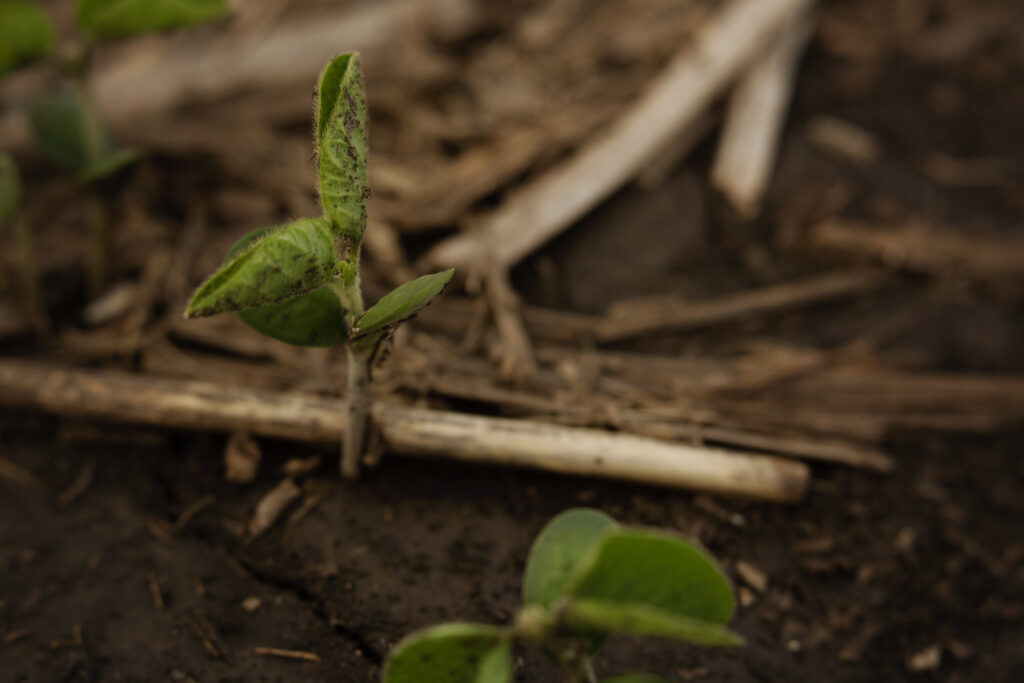Let’s face it, soybeans are not very exciting in the first month after emergence. Sometimes it feels like you’re watching paint dry trying to get them to grow. It’s an awkward stage, but understanding fundamentals of soybean growth may help you develop better soybeans.
If you feel like soybeans don’t grow very fast in the first month, you’re not just making it up. It’s part of a soybean’s somewhat awkward phase. The first five trifoliates will come out every 5-7 days and is often referred to as the slow growth phase. Once the plant gets past the 5th trifoliate, it will begin the rapid growth phase where new trifoliates will emerge every 3-5 days.
We all know corn will determine its yield by V5, but what about soybeans? Soybeans will set its branching potential by V2-V3. Stress events can influence branching. Clipping, cutting, or most commonly rolling, is used to help influence branching and multiple main stems. Soybeans will set its maximum number of nodes at V5. Both branching and node potential have significant impacts on yield potential. This is why so much attention has been given to early planting as well as planting populations. Advanced Agrilytics has a proprietary soybean structure classification system called VPI. The Variety Profile Index defines the main stem yield versus branching potential. In turn this helps in placement and population maximization.
nodes at V5. Both branching and node potential have significant impacts on yield potential. This is why so much attention has been given to early planting as well as planting populations. Advanced Agrilytics has a proprietary soybean structure classification system called VPI. The Variety Profile Index defines the main stem yield versus branching potential. In turn this helps in placement and population maximization.
Good nodulation is crucial to soybeans. This symbiotic relationship between nitrogen fixing bacterium, Bradyrhizobium and the soybean roots is where the plant will generate most of its nitrogen for the growing season. It takes roughly 5 pounds of nitrogen to produce a bushel of soybeans. With an 80-bushel yield goal, that will require upwards of 400 pounds of N. Nodules can be found 10 days to 2 weeks after emergence. It will be almost 2 more weeks before these nodules are actively fixing nitrogen. Having optimal nodulation should be a primary focus for every soybean producer.
I consider myself a masculine guy. I love muscle cars, getting greasy working on stuff and the smell of 90 weight gear oil, but every year I long for flowers on the first of June for my birthday. Not in the bouquet form, but from my soybeans. Flowering in the first week of June is often a great indicator of being well set up for good yields and podding. Initiating flowering in advance of the Summer Solstice on June 21 often allows the plant to stay in the reproductive phases of R2 and R3 longer thus setting more nodes than later planted soybeans.
Knowing the early fundamentals of soybeans can help growers unlock some yield potential for potentially higher soybean yields.




 and then
and then